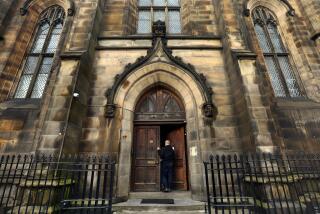Life in the Poorhouse
- Share via
Letter writer Rod Britten (Jan. 30) is surely being facetious when he feels that “poorhouses” speak of a kinder, gentler age.
The term “poorhouse” is a Scottish term. The English equivalent was “the work house.” They evolved in England and Scotland in the 17th Century. They were run by local and district authorities, usually at the Parish Council level. It was intended that these “houses” would be used by orphans, paupers, and the aged and infirm. People were admitted only when they had no visible means of support.
It was not free lodging. Everybody was expected to fulfill their work task--usually, a filthy occupation such as sorting hemp or jute. In the unsanitary conditions without heat and adequate diet many paupers soon succumbed to the harsh conditions.
In rural areas, peasants would often prefer to perish in their hovels rather than submit to the attentions of the work houses.
They were abandoned in England in about 1864 as more humane institutions were adopted to house the poor.
Poorhouses--a period of history that would have no place in modern-day America.
LESLIE C. HEDGES
Phillips Ranch
More to Read
Sign up for The Wild
We’ll help you find the best places to hike, bike and run, as well as the perfect silent spots for meditation and yoga.
You may occasionally receive promotional content from the Los Angeles Times.





